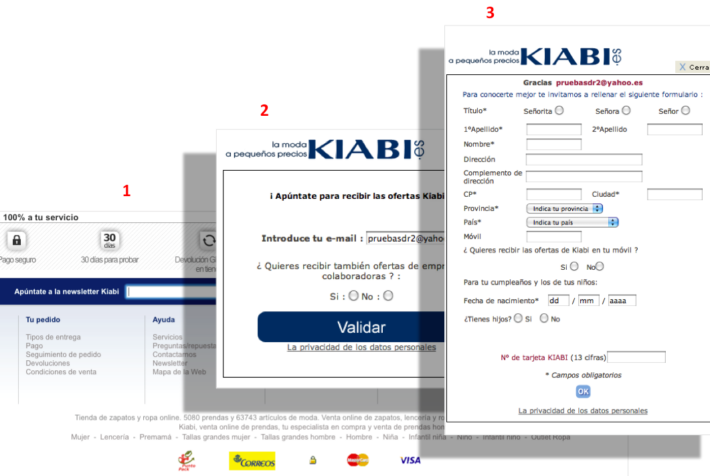Single Opt-in, Opt-out and Double Opt-in Mailing Lists

 The quality of a mailing list is a vital factor for the success of email marketing actions, so the timing of lead acquisition is of great importance. There are several methods of lead acquisition, but all of them require the user confirmation in one way or another. Today we will discuss three ways to confirm this registration: Opt-in, Opt-out and Double Opt-in.
The quality of a mailing list is a vital factor for the success of email marketing actions, so the timing of lead acquisition is of great importance. There are several methods of lead acquisition, but all of them require the user confirmation in one way or another. Today we will discuss three ways to confirm this registration: Opt-in, Opt-out and Double Opt-in.
Opt-out lists: the user asks NOT to receive the emails.. In the first instance it is assumed that the user wants to receive our communications and the user's action consists of unsubscribing to stop being part of the list. This is usually data obtained manually (from business cards, public data, etc.) without prior permission. This option is not recommended, firstly because legally we are not allowed to send communications to users without prior consent, but also, in terms of results, although it can be based on a high volume of data, it usually results in high bounce rates (because at first we do not know if the email address is used, it still exists...) and very low reactivity.
Opt-in lists: the user asks to receive the emails. At the time of subscription, the user consents to receive our communications, but no further checking is done. Although they perform less well in terms of open, click-through and conversion rates than double opt-in, they are the most common, as the volume of leads we get is higher as they offer less friction in the registration process.
Double Opt-in lists: the user asks to receive the emails and confirms that he/she is interested.. It is the option that yields the best results in terms of openings, clicks and conversions and with the lowest bounce rate... The user opts-in to a website and then receives an email requesting confirmation. Registration is only completed if the email is valid and the user shows real interest. However, double confirmation implies a greater friction that results in many of the registrations not being completed and not becoming part of our list.
The conclusion on which method to choose is always determined by the specific objectives and resources of each campaign. Generally, as mentioned above, Single Opt-In lists are used to facilitate the registration process. In this way, although the statistics of Double Opt-In are notably better (Here is a study by Maichimp that proves it.), In absolute terms, it can benefit us to reach a large number of subscribers.
That is, we can have a list of 1000 people of which 500 open the emails (50%) and 200 click (20%). Or a list of 100,000 in which 5000 open (5%) and 2000 click (2%). The response rates are much lower, but in absolute terms we are getting better results.
What is your experience and have you worked with both types of lists?

